Breeding cats: It's a subject wrapped in fascination, questions, and often misconceptions. But what really goes into the world of cat breeding? How can one differentiate between ethical and unethical practices? What about rare breeds and the future of designer cats?
In this guide, we'll navigate through these intriguing waters, from understanding different breeds to registering your cat and choosing an ethical breeder. Whether you're a current cat owner or looking to enter the breeding world, this article offers a glimpse into the complexity and wonder of cat breeding.
Join us, as we scratch beneath the surface and explore what every cat enthusiast should know.
The Intricacies of Cat Breeding: A Comprehensive Guide
Are you contemplating the idea of breeding your cat or exploring the possibility of becoming a cat breeder? This comprehensive guide is tailored to those with an interest in the subject, whether from a professional standpoint or mere curiosity.
Understanding Ethical Cat Breeding
Breeding pedigreed cats demands extensive preparation and insight. It's not a task to be undertaken lightly, as ethical cat breeding is a complex and challenging process. At TheCatSite.com, we vehemently advocate for the spaying and neutering of cats, with the sole exception being breeding conducted by experienced, ethical breeders. Inexperienced attempts at mating cats of the same breed can result in dire consequences, even leading to suffering or fatality for the mother cats and kittens.
A Brief History of Cat Breeding
For much of the history of domesticated cats, deliberate breeding for specific types has been rare. The cat breeds we recognize today, like Persian, Siamese, Balinese, Abyssinian, and Somali, have largely evolved naturally in various geographic regions. These breed names often point to their real or assumed geographic origins.
The era of international cat breeding was ushered in by the great cat exhibition held in Great Britain in 1871. This significant event, mainly showcasing Persian and shorthaired cats, ignited interest in the field, marking a turning point in the conscious evolution of cat breeds.
In summary, cat breeding is an intricate and responsible undertaking, requiring thorough knowledge and ethical considerations. The development and recognition of specific breeds reflect both natural evolution and intentional efforts by committed breeders.
For those considering this path, awareness of the complexities and historical context is vital to ensure the well-being of the cats involved.
Types of Cat Breeds
Cat breeds are generally divided into two major categories - longhaired and shorthaired cats. In each of these categories, there is a variety of specific breeds.
Cat associations in Europe and the United States officially set the standards for each breed. These standards change from time to time, according to the current trends in the field, and the names used to indicate specific breeds are different in the United States and Europe.
Also, some breeds are recognized as separate breeds in the United States, but not in Europe, and vice versa.
What is ethical breeding?
The ethical breeding of cats in catteries is a complex business. You may think that it is enough to buy any two purebred cats and start breeding them. It requires a good understanding of the genetics governing each breed and detailed knowledge of the breeding history of the specific breeding pair.
Most pedigree cats are unsuitable for further breeding. These are called "pet quality" and are usually neutered and sold as pets to non-breeders.
Only a few of the kittens born to a pair of pedigree cats of the same breed have the right genetic qualities to be used as breeding cats. These are called "show quality" and are relatively rare and expensive. It is especially important to know the diseases and genetic flaws typical of each breed, in order not to breed cats that have these flaws.
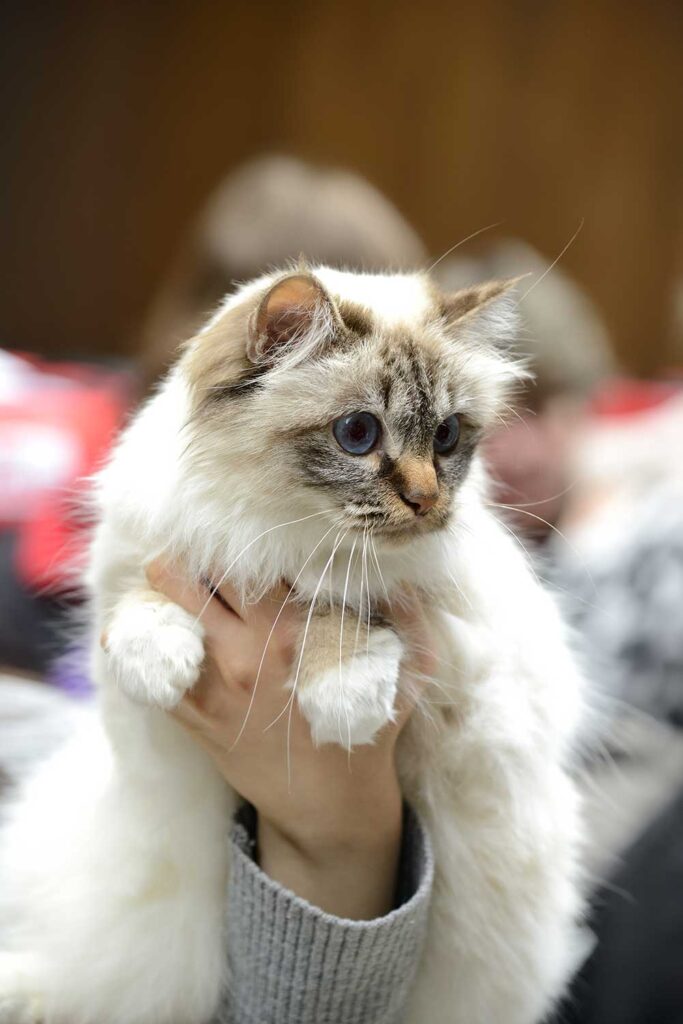
What Are Cat Registries?
Cat registries are the organizations in charge of keeping records of the genealogies of purebred cats.
They're the ones that issue formal certificates attesting to a cat's breed and documenting its lineage. These are known as pedigrees.
Cat registries hold cat shows, where registered cats are judged according to specific breed standards.
Titles earned during these shows are then recorded in the cat's papers and can be used to assess a cat's potential in a breeding program.
Some registries have introduced genetic testing allowing for an even more accurate evaluation of a cat's potential role in the future development of the breed.
Cat registries aim at promoting the ethical and professional breeding of cats.
Essentially, they all support educating cat owners about proper cat care and controlling the population of cats by limiting breeding to established breeding programs carried out by ethical breeders.
Cat Registries, Large and Small
Remember the first cat show in 19th-century London? It was then that show organizers formed The National Cat Club. Essentially, it became the world's first-ever cat registry.
The Cat Fancy being the competitive field that it is, it wasn't long before cat breeders branched out and set up new cat registries. These reflected different views of breed standards or other aspects of breeding and showing cats.
Today there are numerous cat registries in the US and around the world, but four large international registries dominate the arena. Most pedigreed cats will have their papers issued by one of these associations.
Cat Fanciers Association (CFA)
Founded in 1906, the CFA is one of the largest cat registries in the world. Its headquarters are in the US, and it is predominantly an American association. The CFA is considered to be more conservative than other registries and currently recognizes 44 cat breeds.
The Cat Fanciers' Association - The World's Largest Registry for Pedigreed Cats
The International Cat Association (TICA)
Established in the USA in 1979, TICA's founder wanted it to be a more progressive and flexible registry. It seems to hold true to its mission statement, recognizing over 55 cat breeds and introducing a formal genetic registry.
Tica.org
Fédération Internationale Féline (FIFe)
FIFe is a governing body that brings together 42 cat registries in 40 different countries. The organization offers a unified registry with established breed standards.
Founded in France in 1949, its current board members reside in various countries in Europe.
http://fifeweb.org/
American Cat Fanciers Association (ACFA)
Not to be confused with the CFA, the ACFA was established in 1955 and currently recognizes 53 cat breeds. It emphasizes the friendly and welcoming nature of its organization and the social aspects of cat breeding.
American Cat Fanciers Association
How to Register Your Cat
To register your cat as a purebred cat and attain its pedigree certificates, you need the help of the breeder who sold you the cat.
In fact, any ethical breeder will sell a purebred kitten either with papers or with special documents that allow you to register the cat with the appropriate association.
Registering a cat involves a fee and once the procedure is through, you will get your cat's papers in the mail.
SIGN UP FOR THECATSITE'S EMAIL UPDATES >
What About Registering My Mixed-Breed Pet Cat?
If you want to get into the world of Cat Fancy, you definitely do not need a purebred cat. Most registries allow and even encourage showing and registering mixed-breed cats. All you need is a relaxed, and easy-going cat who will enjoy attending cat shows with you.
If you entertain the thought of ever becoming a breeder, the right way to go about it is by registering and showing your mixed-breed cats. Obviously, beautiful as they are, these cats should never be part of a breeding program, and cat registries will require proof of neutering for you to show the cat.
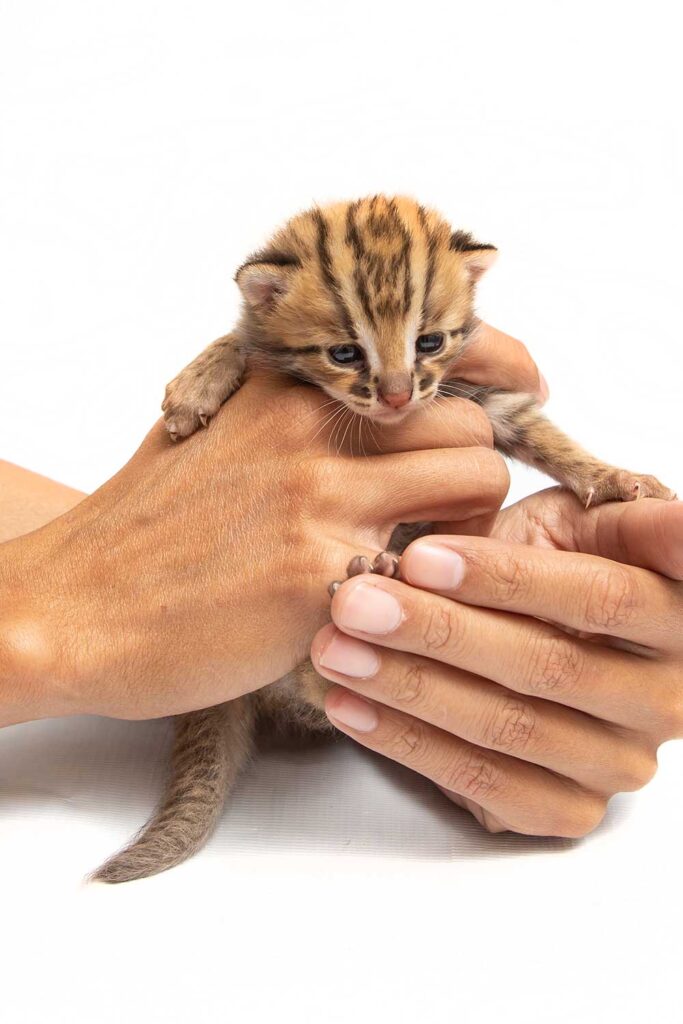
How To Choose A Cat Breeder
Most cat lovers prefer to adopt a domestic pet cat of no particular breed. However, some have their heart set on a specific cat breed, for various reasons.
Knowing which breed is suitable for you and your lifestyle is indeed the first step towards sharing your life with a pedigreed pet.
But where will you find your purebred cat?
Adopt - don't shop
You probably know the pet store is a terrible idea. A much better option is breed rescue organizations, but you may not find the right cat in your area. What you're looking for is a reputable cat breeder.
But how to choose a cat breeder who is ethical and reputable? Here's a short checklist that will help you assess the quality of the cattery you're considering –
Transparency
You should never get the feeling that something is being hidden. The breeder should answer all your questions about the cats and the cattery, and allow visits to the premises. The breeder should give you the option to view the living conditions of the queen and kittens.
Documentation
The breeder should have all the necessary papers: not just proof of bloodlines, but also all relevant medical records of the queen and your kitten of choice. They should provide you with a written health guarantee for your kitten, detailing all vaccinations, deworming, defleaing treatments, etc.
A Clear Spay/Neuter Policy
An ethical breeder will make sure that you do not breed your kitten (unless you're a fellow professional breeder yourself). They will either have already spayed/neutered the kittens or require a written contract that ensures the kitten is fixed before a certain age.
A reputable breeder will never suggest that you can breed your pedigreed pet cat.
Read more: Why You Should Spay And Neuter Your Cats
The Right Age
Reputable breeders allow the kittens to remain with their mother until they are at least 12 weeks old.
They will not sell younger kittens, no matter how much the future owner insists. Kittens must stay with the Mama cat and get their first set of vaccinations before being released to the buyer.
Read more: How Old Do Kittens Have To Be To Leave Their Mother
Long-term Guarantee
A good breeder will be happy to take back the cat, at any point in the future, and will state as much in the contract. They may not refund your money, but will be responsible for re-homing the cat in the future should you not be able to take care of her or him.
Availability
A good breeder should make himself available for questions and advice, both before having the cat placed and after. They should provide you with detailed instructions as necessary for you to give a good home for the cat.
Active Interest in the Cat's Future Home
An ethical breeder does not merely sell kittens. They actively screen buyers and make sure the cats go to good homes. Expect the breeder to ask many questions about your home and your experience with cats.
When possible, some breeders may ask to visit your home and inspect it to make sure the kitten goes to a safe and secure environment.
The Contract
Last but not least, reputable breeders use a contract. The contract is more than a mere formality. It is their way to ensure that the cat goes to a home where it will receive the best possible care.
The contract is likely to mention the circumstances under which the breeder can take back the cat. This is an important clause, which helps the breeder protect the cat from future abuse.
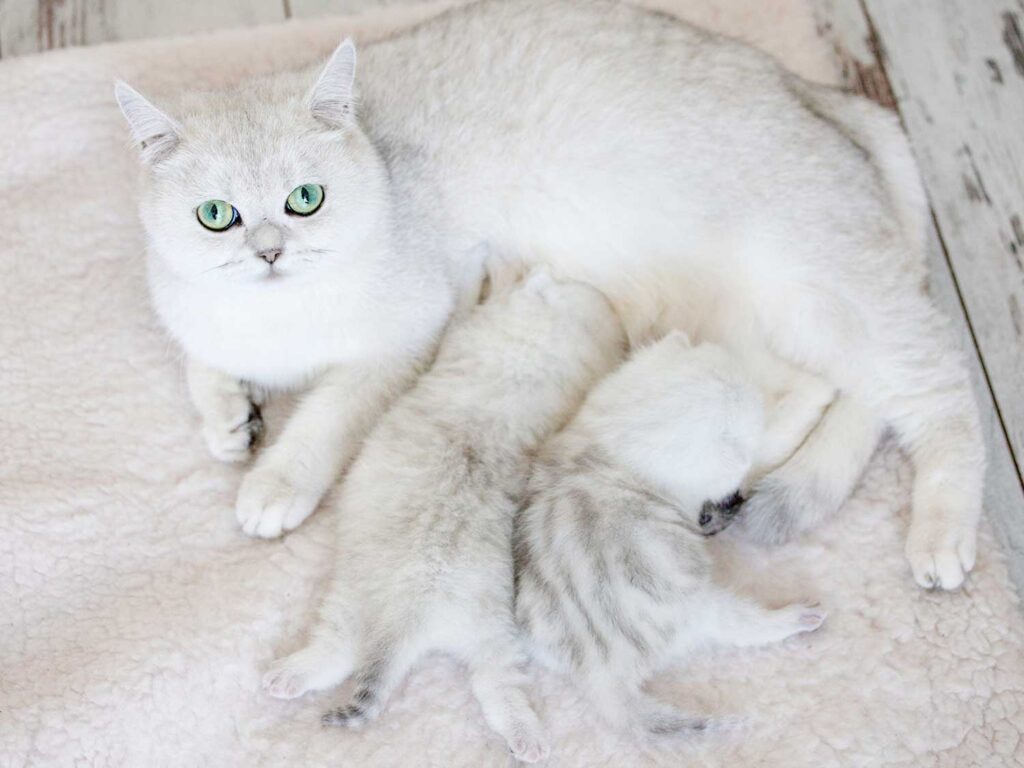
Why You Should Buy Only from an Ethical Breeder
To put it simply – if you're not buying from a reputable, ethical breeder, you are buying from a backyard breeder or worse, a kitten mill. These breeders are less likely to understand the breed genetics and work towards creating healthy well-behaved cats.
Buying from an ethical breeder ensures you get a cat that's been bred not just for looks, but first and foremost for good health and temperament. When dealing with purebred animals, this is crucial.
You need to know that the breeder you're working with knows what they're doing, and can truly deliver you with the cat of your dreams. Still not sure how to choose the right cat breeder for you? Post your questions in our Cat Showing & Ethical Breeding Forum and let our members help.
Creating New Cat Breeds
The Cat Fancy began at the end of the 19th century with very few established cat breeds. Even as late as the 1950s, there were no more than ten cat breeds. Fast forward to our age: Walk into a national cat show, and you'll be seeing dozens of cat breeds with very distinct looks.
Some breeds - such as the Siamese, the Persian, and the Birman - have been around for over a century. Yet many cat breeds are very new and rare.
How do new breeds come into being?
Currently, there are four ways to create a brand-new cat breed:
- Finding a rare natural breed
- Breeding a rare random genetic mutation
- Breeding for a desired new look
- Crossing two or more known breeds
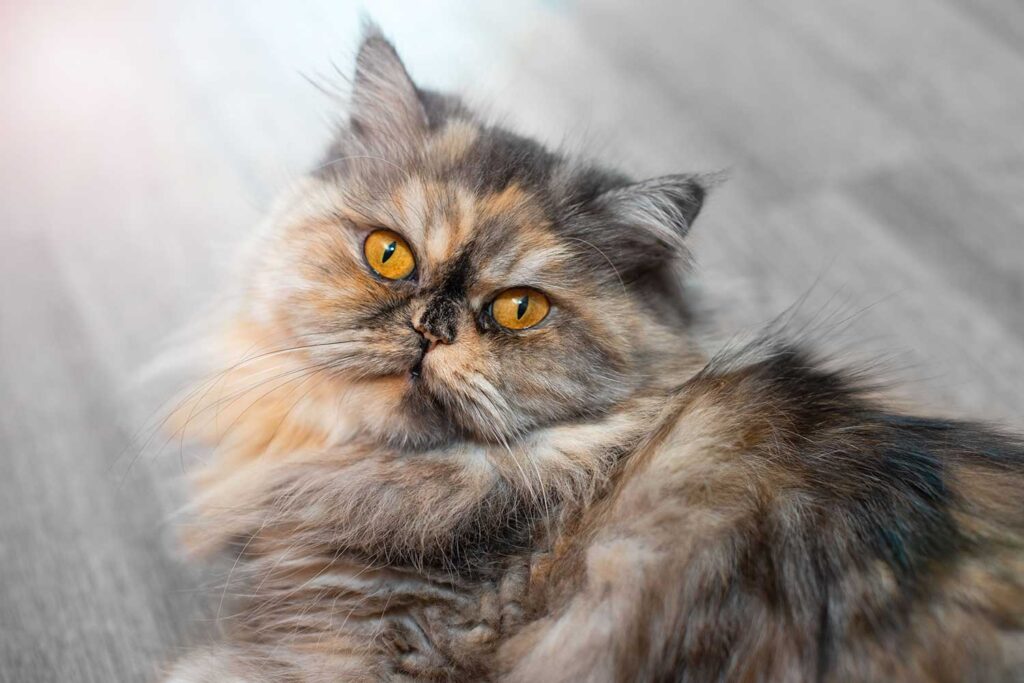
Finding a rare naturally-established breed
The term "new" in the case of these breeds refers to their status in the registries. They may be "old breeds" in every other sense of the word. Breeders begin by importing cats of that breed into the US and Europe to establish a breeding program.
They then work to establish a breed standard and create a stable and healthy gene pool. In fact, this is how the Siamese and Persian cats started. A very recent example is the Khao Manee.
Nurturing a rare random genetic mutation
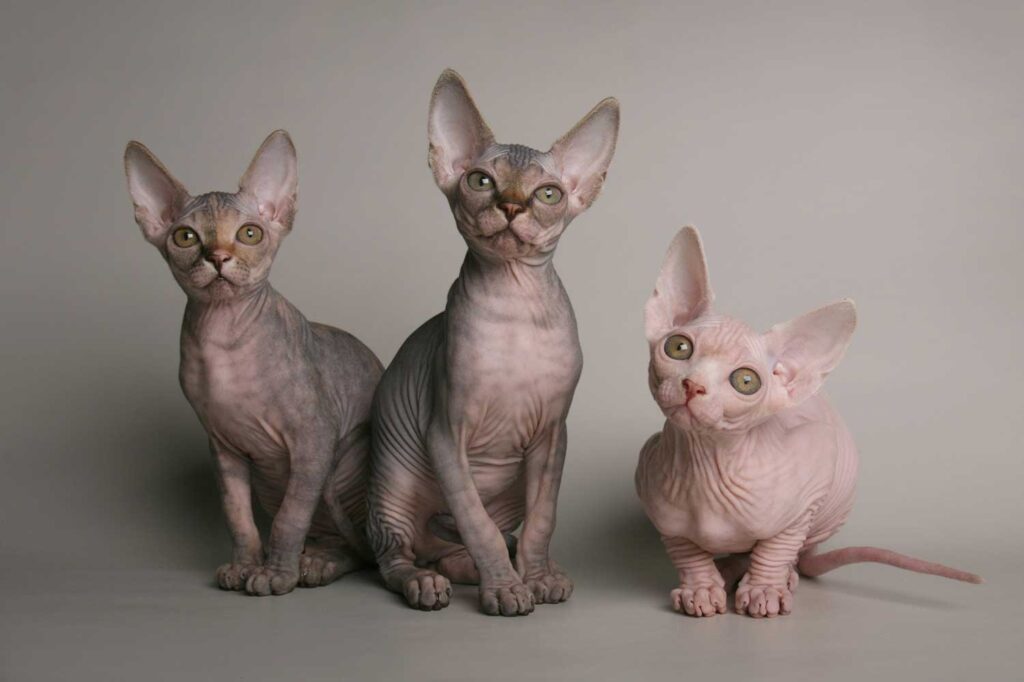
Genetic mutations happen all the time in nature. A mutation can create an unprecedented change in a cat's physique or character and could serve as the basis for developing a new breed. The mutant cat becomes the first in the line of a new breed, as the breeder or breeders strive to retain the unique mutation while working towards establishing a wide-enough genetic pool.
SIGN UP FOR THECATSITE'S EMAIL UPDATES >
The Scottish Fold is an example of this process, as are the American Wirehair and the Sphynx. Far rarer, the Donskoy is a fairly recent example.
Breeding for the Desired New Look
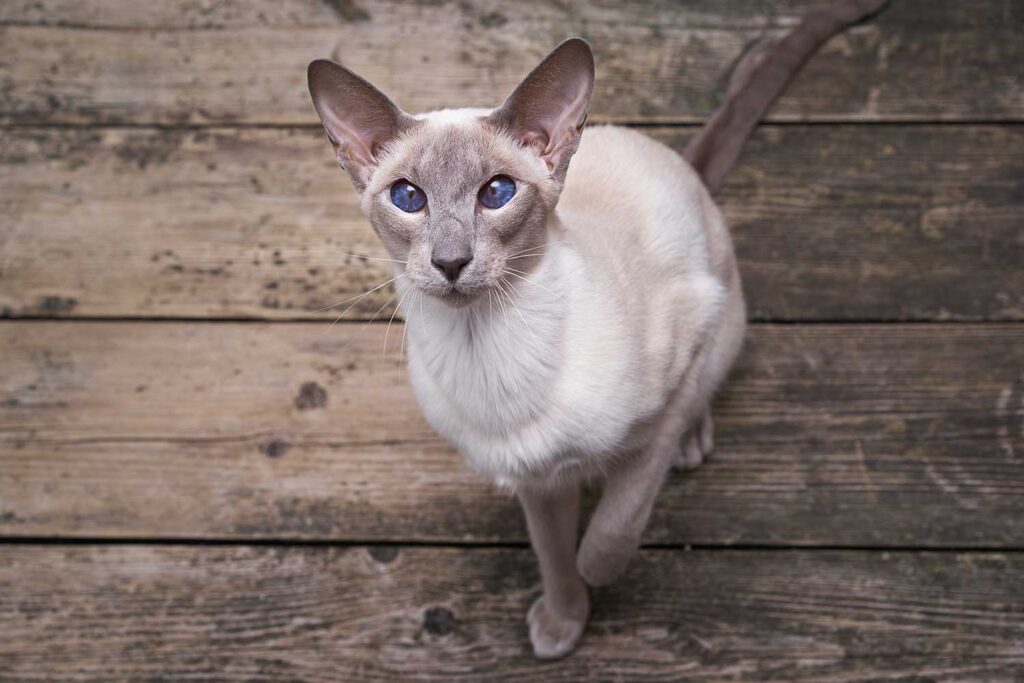
In this case, a breeder or a group of breeders decide on the desired look and work toward creating it. They begin with a certain established breed, then select the cats with a specific look, to amplify the effect in future generations.
To some extent, this is done in every breeding program, but it can also be done to create virtually a new breed of cats. Comparing modern Siamese cats with the traditional "apple-head" or traditional Siamese cats of the past shows just how different a look can be achieved this way.
Crossing known breeds
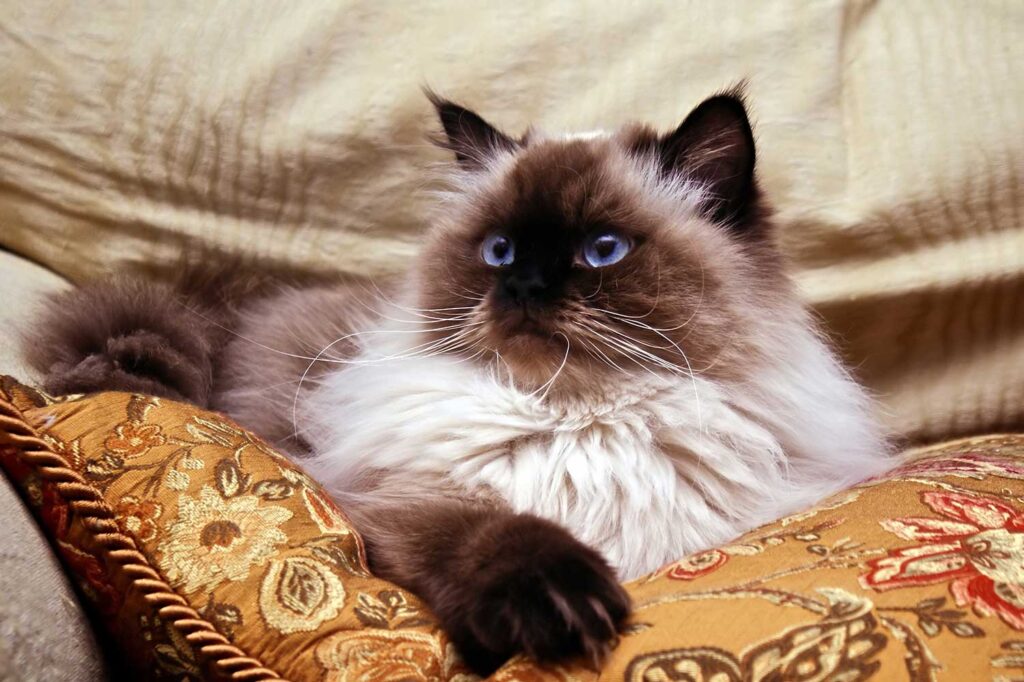
Here too, breeders first come up with a vision for a new breed, different from the ones which already exist. They then work towards achieving this look by deliberately crossing specific breeds.
Crossings are usually allowed in the initial stages of the breed-creation process. Later on, they are gradually limited until there is a stable genetic pool for the new breed.
Crossing breeds is much faster than breeding for specific characteristics within a breed, but it can be a risky business. Breeders can accidentally introduce negative genetic traits into the new gene pool created by "mixing up" existing breeds.
For example, we know today that every such new breed which was created using Persian cats is at risk for carrying the gene for PKD (Polycystic Kidney Disease).
The popular Himalayan began as a cross between Siamese cats and Persian cats, to achieve longhair color-pointed cats. Napoleons and Minskins serve as more recent examples.
Creating a New Cat Breed Ethically Is Not Easy
Creating a breed takes a lot more than raising parents of several breeds, letting them mate, and selling the kittens. No matter which of the methods is used, creating a new breed ethically takes a lot of work. It is usually a group effort involving several catteries.
The breeders have a clear vision and plan, and they often work with geneticists in an attempt to achieve a certain look. They actively breed toward it rather than arbitrarily mixing and matching cats.
Breeders must take extra care to weed out health issues as well, and crossing with other breeds is done with great care. The aim is to create a large enough genetic pool to avoid hereditary health problems, while at the same time making progress towards an established breed look.
Of the larger cat registries, TICA has two special categories for these experimental cat breeds. These breeds begin as "Preliminary New Breeds" and can, later on, be promoted to the "Advanced New Breeds" category.
What the Future Holds: Designer Cats?
Genetic engineering could very well be used in the future to create new breeds of cats. In theory, Mr. Green Genes, the glow-in-the-dark cat, could have been the first cat in a line of fluorescent kitties.
Just like the first Ragdoll or Donskoy, he has a unique genetic variation that can be inherited by his offspring. The difference is, Mr. Green Genes' mutation was not random. It was deliberately created by scientists to test a technique of gene therapy successfully.
However, at this point, lab-generated breeds developed using genetic engineering belong to the realm of science fiction. Creating such a cat is an expensive and time-consuming process. "It takes a lot of work, support for personnel and cats.
It is not an efficient process. Transgenics should only be used for a strong scientific reason such as fixing an inherited disease," Professor Lyons explained. Until that changes, breeders will keep using more traditional ways to create new cat breeds.
Seven Rare Cat Breeds You May Not Know
Getting a new breed of cat to be counted among the "regular" championship breeds can be a long process. Breeders work long and hard to achieve a certain look and establish that as the standard for a new breed.
TICA - The International Cat Association - has special official categories for these new breeds, and they can be shown while technically they are still being developed.
Here are seven new breeds recognized by TICA, which you may not have heard of before.
SIGN UP FOR THECATSITE'S EMAIL UPDATES >
Khao Manee
A native of Thailand, this is one of the naturally-occurring breeds which was first imported into the US in 1999. Kaho Manees, sometimes referred to as Khaomanees (one word), are completely white cats. They are famous for being odd-eyed cats, but while this is indeed a preferred trait, even-eyed cats still meet the breed standard, and eyes can be of any color.
A couple of dozen of these cats have been imported from Thailand into the US, where a group of breeders is working together towards creating a breed with a moderate SE Asian type head and body. To that end, crossing with Thai-born cats of other colors is allowed at this time.
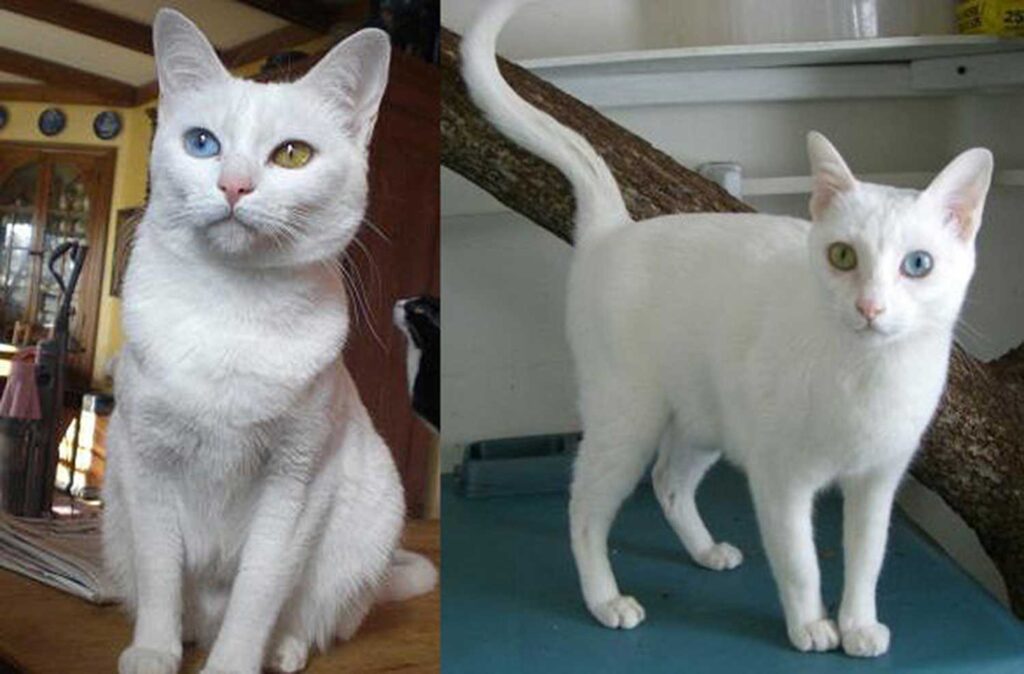
Photo by Odyssey Khao Manee - Welcome to Odyssey
Napoleon (and Napoleon Longhair)
Munchkins were the original dwarf cats, developed from a random mutation discovered in the 1980s. Deliberate mating of Munchkins with other breeds created several new dwarf breeds, one of them being the Napoleon.
Napoleons were created by mating Munchkins with cats of the Persian breed group, which included Persians, Himalayans, and Exotic Short Hairs.
The result is a new breed with short legs (though some cats do not display this trait) and a characteristic round face with big round eyes, similar to that of a doll-faced Persian.
The Napoleon has a round body, too, a lot like that of a Persian cat, only it usually has the short legs of a Munchkin. Their coat may be long, but it is more manageable than the coat of a Persian.
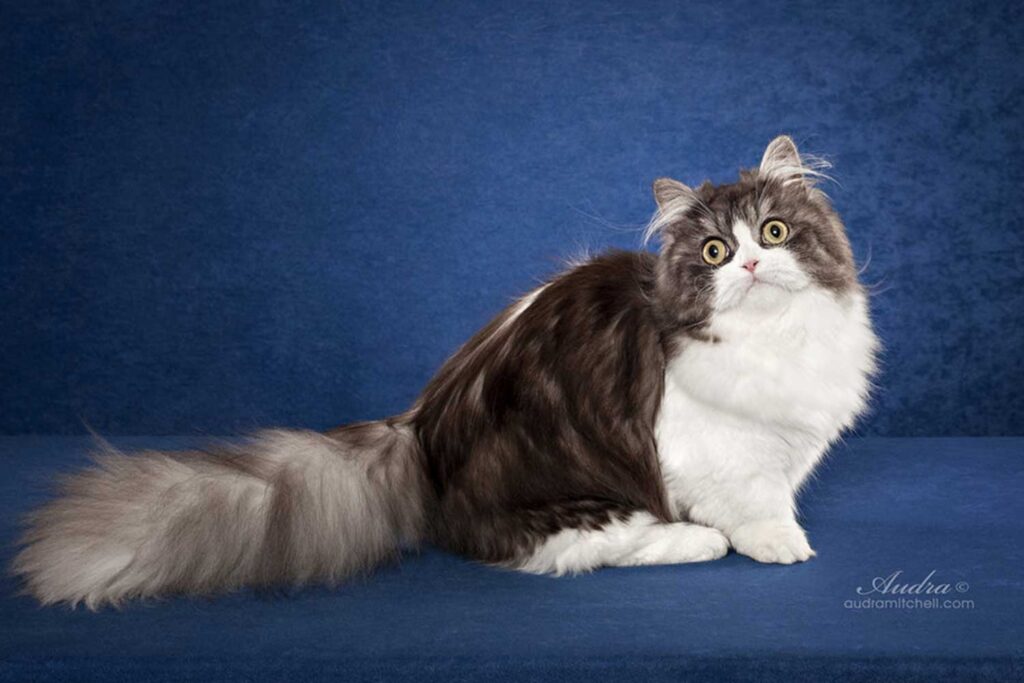
Picture by Blue Skies Cats - Blue Skies Cattery Home
Donskoy
This breed was developed from a single rescued cat in Russia, in a city called Rostov-on-Don (hence the name). The cat was at first thought to suffer from a rare skin disorder, but eventually, this was found to be a new mutation for hairlessness.
This mutation is unrelated to the better-known Canadian Sphynx, although the breed is sometimes called Don Sphynx. Donskoys don't have to be entirely bald. They sometimes sport very short coats of various textures, which may only be present during the cat's early years of life. These cats are strong and muscular, with large ears and almond-shaped eyes.
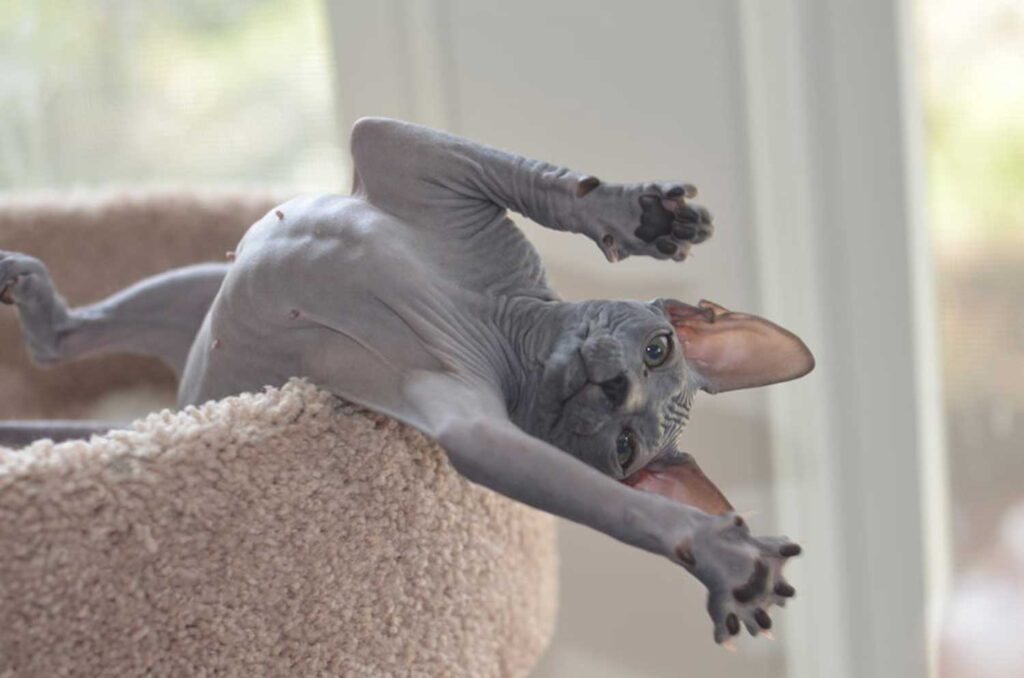
Picture by KathrynEden, DonEden Cattery - Home
Minskin
The Minskin is the result of a deliberate breeding program developed around the turn of the century to meet the vision of one breeder, Paul McSorley.
McSorely sought to create a short-legged cat with a unique coat pattern where hair would grow only on the body's extremities. After several generations, he finally met his challenge, and the Minskin was created.
Munchkin and Sphynx cats were used in the program, but also Devon Rex and Burmese cats. The end result is a dwarf cat with a short velvety coat on the head, legs, and tail and a relatively bald body.
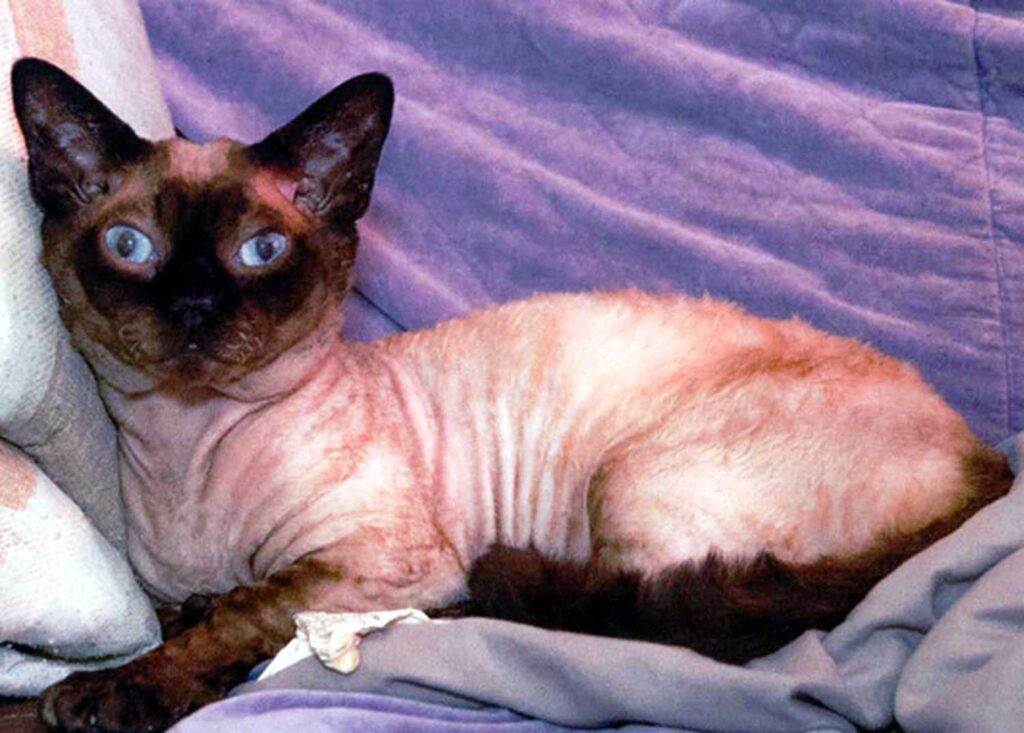
Picture by sweet as candy - Sweet Minskin cats and kittens
The Highlander
Highlander cats are large and friendly. They have a very distinct look, with ears that are firm, yet softly curl at the tip and short tails.
This unique look is the result of the deliberate breeding of two hybrid breeds back in the 1990s: the Desert lynx And the Jungle Curl. The resulting cats were at first known as the Highland Lynx, but the name was later changed to the Highlander.
The breed standard also calls for an average to large body and an overall athletic body build. Highlander cats can be tabbies or colorpoint, but they cannot be bi-colors.
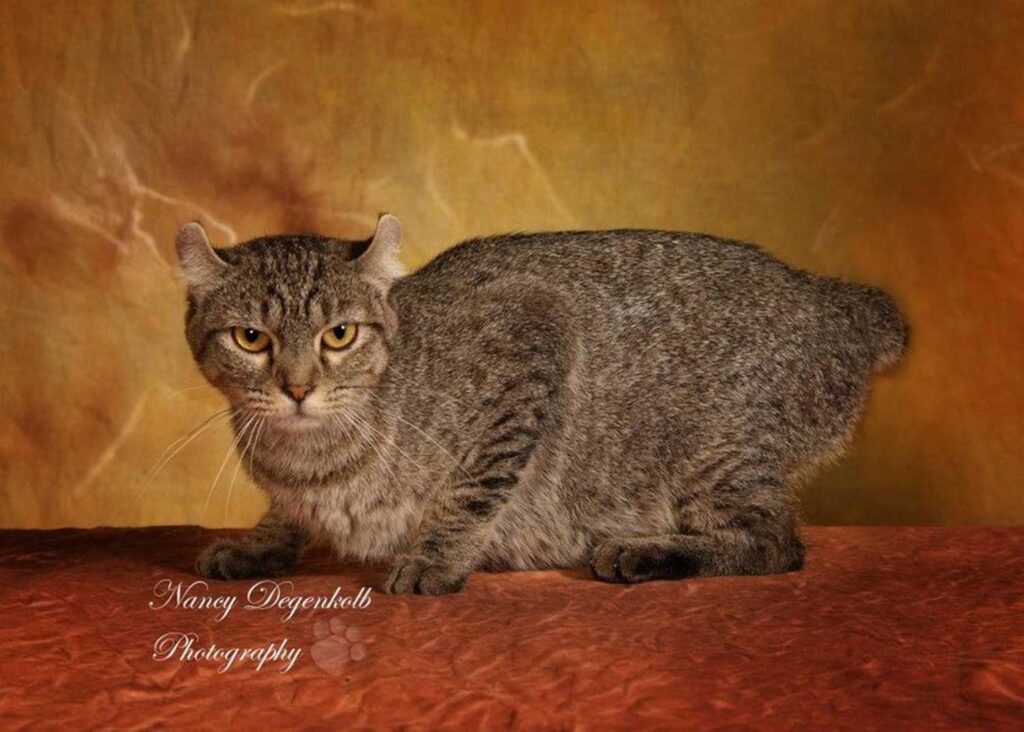
Picture by The The Wild in Heart Cattery and The Home of the Highlander - wildathearthighlanders.com.
The Serengeti
With a clearly exotic "wild" look, you might think the Serengeti was a hybrid cat (in hybrids, wild cats are used to introduce unique traits to the domestic cat genetic pool).
However, this majestic feline is entirely domestic. It's the result of deliberately crossing Bengal cats with Oriental shorthairs, initiated by the founder of the breed: Karen Sausman of Kingsmark Cattery in California.
The result is an elongated cat with large ears and large round eyes. The coat has a distinctly spotted tabby pattern. The coat can be black or even silver, but if any pattern comes through, it should show spots.
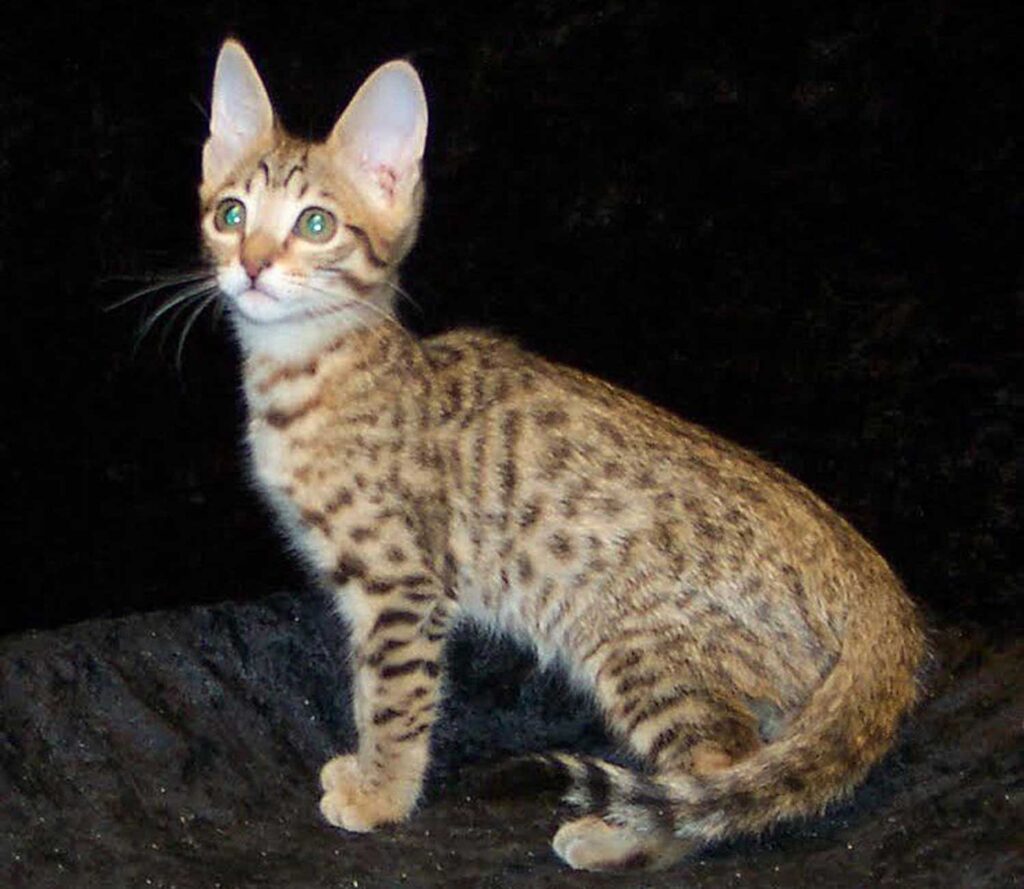
Picture by Kingsmark Cattery - Bengal Cats & Kittens Andalusian Horses & Horse Breeders in California
The Sokoke
Relatively new to the Cat Fancy world, this is, in fact, an "old breed", naturally occurring in a specific area in Kenya, Africa. The founding cats of the Sokoke breed were imported from Africa into Europe in the 1980s and 1990s, with a second, separate wave of imports bringing "new blood" into the lines in the first decade of the 21st century.
Recent genetic studies have shown the Sokoke to be related to the Asian Cats group, which could help explain its lithe elegant silhouette. These cats are strong and muscular, with a dense brown tabby pattern.
Sokokes are friendly and social cats, yet independent. Being a natural breed, they have no known hereditary diseases. They shed very little since they hardly have any undercoat.
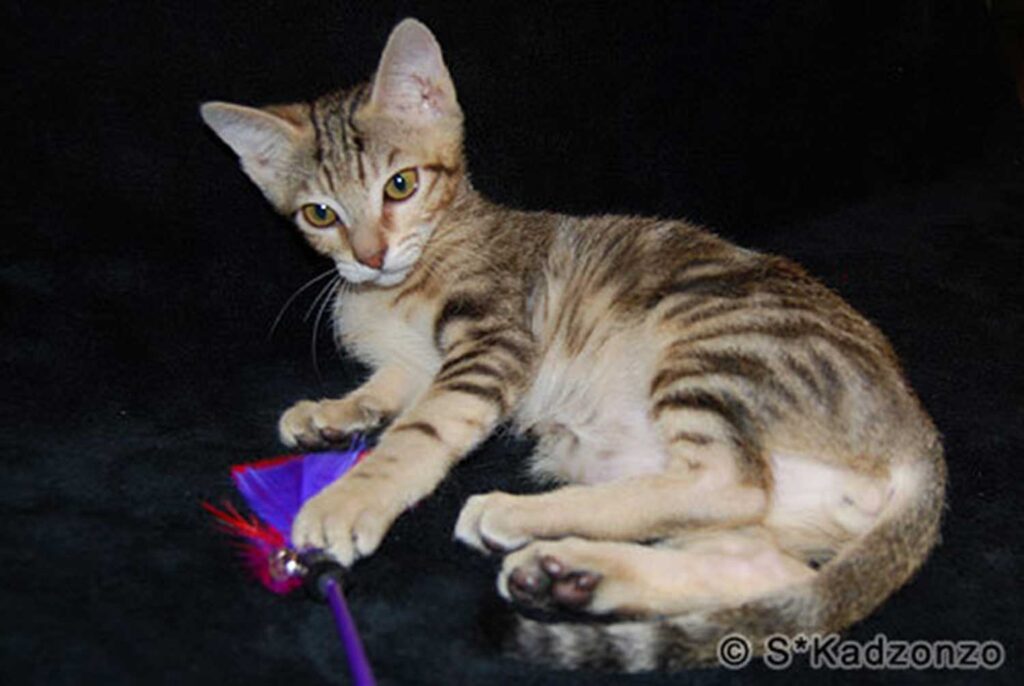
Picture by Kadzonzo Cattery - SOKOKE, Sokokekatter, SOKOKE katt, kattras
"I own a purebred cat - should I breed her and sell the kittens?"
Cats are cute, and kittens are cuter, so why not let Kitty have a litter? The cuteness factor will guarantee they all find homes, right? Since Kitty came with papers that say she's purebred, then people will be willing to pay for her kittens, so there will be a little profit involved as well. Win/win, right?
Not so much. The first thing to consider is this: Is your cat pedigreed? If Kitty came from a shelter or a friend's litter, the answer is almost certainly no. The only litters that are considered pedigreed come from a reputable breeder who will give you papers, aka the cat's family tree.
Papers verify that this cat's ancestors were tested for diseases the breed is prone to and met the breed standard for height, weight, temperament, and coloring. They were shown at sanctioned cat shows and judged by experts in the breed.
There are associations that will give purebred status to a beginning breeder - for the right amount of cash. These are the equivalent of a mail-order marriage license. They will not be recognized by the Cat Fancier's Association. Don't let a cute face lure you into a scam.
But even if your cat has the right kind of papers, don't rush into breeding. The path toward becoming a responsible ethical breeder is long and needs to be followed carefully and slowly.
How to become an ethical cat breeder
You should begin by researching. A lot of research. Visit cat shows and learn all you can about the breed that you're interested in. Do that long before you even purchase your first cat of that breed.
If you bought your cat first, and only then fell in love with the idea of breeding, your current cat may or may not be a good candidate for breeding. First, check your contract. If Kitty did come from a reputable breeder, did you have a contract with the breeder that says she can be bred and shown? Or does the contract state that she must be spayed?
You are contractually obligated to follow through on the agreement. If there was no contract, then in all likelihood, you've been dealing with a backyard breeder. That means that the cat is probably not a good candidate for a breeding program.
Even if you already own a cat that can be mated - do you have a mentor who will walk you through the process? Kitty's breeder may be willing to help - or maybe too busy, but able to suggest someone.
Finding a good mentor is the most important step in your journey to becoming a cat breeder. That mentor can guide you through all the hurdles, including finding the right mate for your cat and caring for the pregnant mother and kittens.
The Challenges of Breeding Cats
Finding a Suitable Mate and Planning Travel
Here are some of the issues that you're likely to face if you're going to become a serious ethical breeder.
Once you've found a stud cat, blood tests will be performed to rule out any disease for both the male and female cats. Since Mr. Cat could be an out-of-towner, travel expenses have to be considered. Will Kitty go to him, or will he travel to meet her? Will the traveling cat make the trip alone, or will the human make the trip too?
Pregnancy and Preparing for the Birth
If the mating takes and Kitty is pregnant (it doesn't always happen on the first try), then the vet visits start to make sure Kitty is gaining weight and staying healthy. You'll need a due date so you can take off work to be there for the birth.
Although most people think cats just naturally know what to do, first-time moms can be very nervous—mortality rates go up then.
Caring for the Kittens: A Full-Time Job
Once the kittens are born, they'll need vet visits as well. Kittens should stay with Kitty until they are about twelve weeks old, so that means a lot of kitten food, milk supplements, bottle feedings, and lots and lots of cat litter.
Networking and Legal Considerations
Of course, you'll have been networking from the beginning about the litter so that when they are born, they are all spoken for—with deposits—and if the estimate of kittens vs. the number of people who want to buy differs, you'll have to deal with that as well. Don't forget the lawyer fees for drawing up your own contract.
The Reality of Raising a Litter: Costs and Emotions
A litter of kittens is not as easy as it sounds. Just the research into the lineage and the search to find a breeder who has a cat to sell you, then the search for a mate for her, can be overwhelming.
Veterinary costs and food bills eat up potential profit. The cat litter bill plus the constant need to clean, scoop, and refill will be enough to make you cry.
Dealing with a Cat's Maturity and Emotional Connection
A cat should be a year old before she's bred. She may go through one or more cycles before then—and she'll be vocal and loud about her frustration during those times. Spraying (urine where you do not want it) is another way to show her unhappiness.
After all the work you've put into a litter, will you be able to let the kittens go? It's a hard thing to face.
Still unsure?
Unless you are knowledgeable about the breed, experienced enough to know all of the above, know people in the breed, have shown cats, and have the time and money to do all the work involved, the answer is: Don't breed. The bottom line is, although the kittens would be among the cutest in the world, for every kitten from your litter who finds a home, there's a shelter cat who doesn't.
How Much Does It Cost To Breed Cats?
Costs will vary depending on where you live, and your relationship with the veterinarian—some offer a discount to regular clients, those with multiple animals, or breeders. Be sure to ask in advance—before you even get a cat to breed. The costs involved can be shocking.

Stud fees and legal fees
You'll want to find a breed quality cat that can cost from hundreds to thousands of dollars. Stud fees vary from the first pick of a kitten to a flat fee that may be as high as the sale price of one kitten. Add in travel costs since the mate could be an out-of-town cat - will you travel with your cat? Remember, not all pregnancies happen on the first try.
Ask your mentor for a reference to a lawyer - you'll sign a contract when you buy your cat and will need a similar contract for your clients as well. You should also have a contract in place to cover the agreement between the owner of the cat of the other sex. Lawyers don't come cheap.
Care During Pregnancy
If you own a breeding queen cat, there will be extended veterinary costs for her pregnancy and birth. Once the cat is pregnant, she'll need an ultrasound, which can range from a moderate fee to hundreds of dollars. This will help determine how many kittens she'll have.
The number of cats is important because you'll want to pre-sell the kittens—and have time to investigate the prospective owners to make sure it will be a good home.
Will Kitty be eating for four? Six? So food intake will increase. She'll have smaller meals, more often, as the pregnancy advances. This means more frequent visits to the litter box for her and more cleanup for you. Some cats may need nutritional supplements.
The pregnant cat will also need regular checkups at the vet's office to make sure things are going according to plan.
Preparing for the Birth: Time and Costs
When it's time for the kittens to be born, plan to take off work. Cats can have kittens without supervision, but in case of an emergency, you'll want to be there. Without supervision, the mortality rate goes up.
Although feline due dates might be more predictable than human due dates, plan on at least three days of following the cat around the house - and then in a moment of inattention, finding she's nested on your best sweater, right next to your good shoes.
Veterinary Visits: Taking Care of the Newborns
Once the kittens are born, they'll need to see the vet too, so be sure to have enough cat carriers to transport Kitty and the brood to the vet's office. The vet may charge a blanket fee for the whole litter or charge per kitten. Kitty and the babies will need to be wormed, twice at least. Kittens will need two series of vaccinations, after eight weeks of age.
Showing Your Cat: An Optional Endeavor
If you decide to show your cat as well, as many breeders do, there will be additional costs associated with traveling and participating in cat shows.
Summing Up the Cost
Purchasing the Cat:
Expect to pay hundreds to thousands of dollars for a quality cat with a strong pedigree.
Finding a Stud Cat:
Find a stud cat with an equal pedigree—the stud fee can equal the price charged for a kitten.
Health Checks:
Blood work to ensure both cats are healthy. This can range from $50 and up.
Travel and Wages:
Travel to/from the stud cat and loss of wages for days off.
Pregnancy Confirmation:
Vet visit to confirm pregnancy (which may not happen on the first attempt). Office visit plus exam. If the vet feels Kitty is pregnant, an ultrasound is done in order to count the fetal heartbeats.
Supplements, Food, and Litter:
Necessary to nourish the kittens.
Advertising Costs:
Advertising costs, so buyers are in place before the kittens are born.
Legal Fees:
Legal fees—to write a contract for buyers. Since you'll want the best home possible for your cats, the contract will include a paragraph that states if for any reason, the buyer must give up the cat, you will take her back. No questions asked. The contract should also address if the cat sold is pet quality or show quality. If show quality, will the buyer be obligated to show and breed as well?
Time Off Work:
Time off work when the kittens are due.
Kitten Care:
Vet visits, food, and litter for the kittens for four months. They should stay with their mother until twelve weeks old. You will also have to socialize the kittens to make sure they are outgoing and unafraid.
Breeding is not for the faint of heart. Emergencies happen, costs are high, and profit is a myth. Only breed if you truly know and love the breed, attend cat shows, know breeders, have the time, money, and patience—and above all, the desire to improve the breed. If you want Kitty to have a litter for any other reason, you're just adding to the pet overpopulation problem.
Still in love with the idea of breeding cats ethically? Check out our Cat Showing & Ethical Breeding Forum where you can post your questions and get help from experienced breeders. Just keep in mind that we have a strict policy against backyard breeding, so if you're breeding non-registered cats unethically, that forum is not the place for you.
SIGN UP FOR THECATSITE'S EMAIL UPDATES >
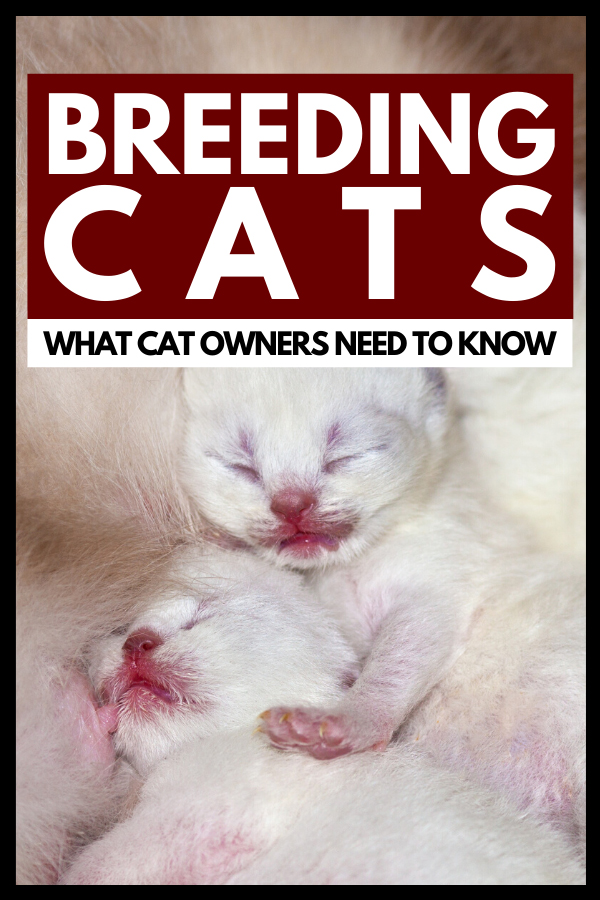
Note: We may get commissions for purchases made through links on this page.

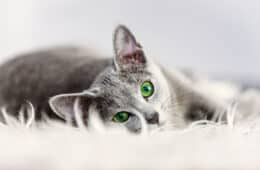

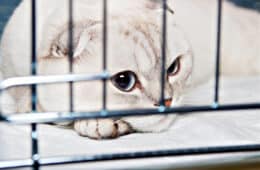
4 comments on “Breeding Cats – What Cat Owners Need to Know”